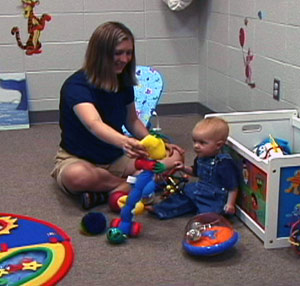The latest paper from our lab is out in the Journal of Experimental Child Psychology. We review how babies learn from visual, auditory, and tactile perception, and extend those findings to illustrate mechanisms by which infants learn from social interactions.
We focus on the statistical regularities that emerge in the moment-by-moment behaviors observed in studies of naturalistic caregiver–infant play. We propose that the spatial form and contingencies of caregivers’ responses to infants’ looks and prelinguistic vocalizations facilitate communicative and cognitive development. We also explore how individual differences in infants’ sensory and motor abilities may reciprocally influence caregivers’ response patterns, in turn regulating and constraining the types of social learning opportunities that infants experience across early development. We end by discussing implications for neurodevelopmental conditions affecting both multisensory integration and communication (i.e., autism) and suggest avenues for further research and intervention.



